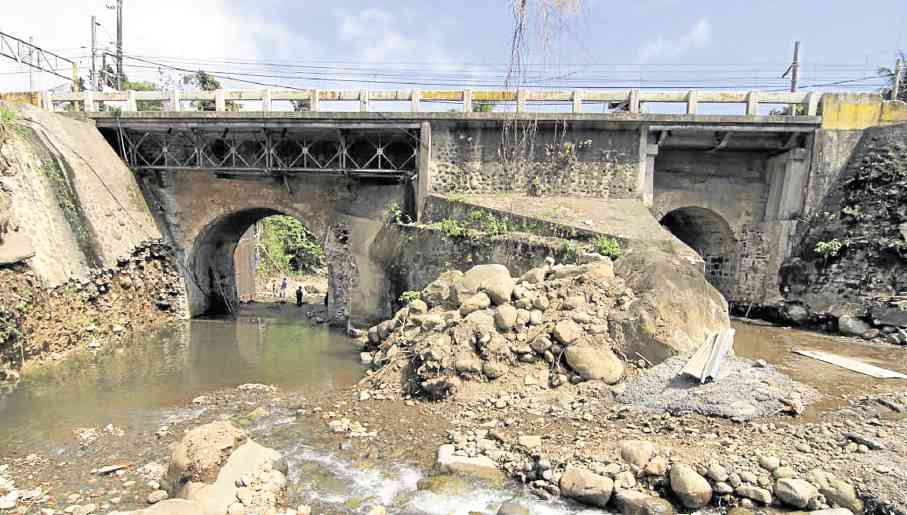
Construction work threatens to damage Gibanga bridge, one of 12 Spanish-era structures in Tayabas City. —DELFIN T. MALLARI JR.
TAYABAS CITY—The local government and heritage conservationists have launched an online petition to stop the Department of Public Works and Highways (DPWH) from undertaking repairs and other construction activities in two Spanish-era bridges in the city.
The petition on www.change.org, initiated on Sunday by the city government’s Oplan Sagip Tulay (OST) and heritage protection advocates, asked President Duterte, Public Works Secretary Mark Villar, National Commission for Culture and the Arts (NCCA) Chair Virgilio Almario and National Museum of the Philippines (NMP) Director Jeremy Barns to immediately stop the bridge modernization and road widening in “Puente Gibanga” (Gibanga bridge) and “Puente Prinsesa” (Prinsesa bridge).
“We hope you (Mr. Duterte) will not allow the destruction of our national cultural treasures,” the petition said.
But Nestor Cleofas, chief of the DPWH Quezon’s second district based in Lucena City, which is supervising the Gibanga bridge project along Maharlika Highway, said the agency could not stop construction activities.
“Stopping (the project) is not an option for us. The … bridge is now too weak to withstand the daily flow of vehicles,” Cleofas said in a telephone interview on Monday.
He said he had yet to receive an order from Villar or any DPWH official to suspend construction activities.
John Valdeavilla, a member of OST, said Salvador Salvaña, chief of the DPWH Quezon’s first district based in Lucban town, had promised the group that the road widening project would not further damage the Prinsesa bridge along the national road linking Tayabas and Lucban.
The petitioners said they were shocked to see workers chipping away layers of brick and adobe from the bridges when they inspected these in February.
They were alarmed that construction activities, which used heavy equipment, “were compromising the inherent heritage character of both bridges.”
When OST members inspected the other bridges, they also discovered cracks, most of these were hidden by moss and grass.
The petitioners assailed local DPWH officials for supposedly ignoring DPWH Department Order No. 138, stating that all projects that might affect historical sites or structures should only be approved when studies were done in coordination with the NCCA.
Republic Act No. 10066 (National Cultural Heritage Act of 2009), they said, also required the DPWH to collaborate with the NCCA in implementing major infrastructure projects that would impact on heritage structures.
Tayabas has 12 Spanish-era stone bridges, most of these still being used by motorists. The NMP declared these as national cultural treasures on Aug. 12, 2011.
Of these bridges, five—Gibanga, Prinsesa, Malagonlong, De Ese and Despedidas—are under the supervision of the national government through the DPWH.
Alitao and Bae bridges are under the jurisdiction of the city government, while Mate, Lakawan, Isabel II, Urbiztondo and Francisco de Asis bridges are supervised by the provincial government.
Gov. David Suarez has agreed to transfer to the national government the supervision of provincial bridges and roads, saying it was in a “better position and capacity to restore and renovate these century-old heritage sites.”